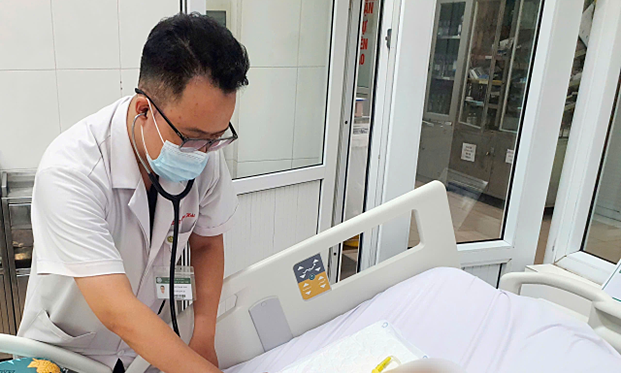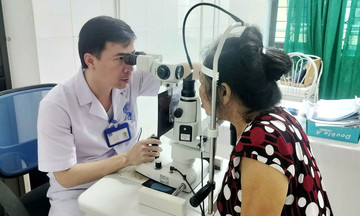According to Associate Professor Do Duy Cuong, Director of the Institute of Tropical Medicine at Bach Mai Hospital, tetanus is a dangerous acute infectious disease caused by the neurotoxin of the bacterium *Clostridium tetani*. This bacterium is commonly found in soil, animal feces, rusted metal, and decaying wood.
When the bacteria enter through open wounds, especially deep punctures or wounds not properly cleaned, they can produce a potent neurotoxin. This toxin enters the bloodstream and travels to the neuromuscular junctions, increasing the level of excitatory neurotransmission, causing muscle stiffness and spasms.
The Institute of Tropical Medicine admits dozens of tetanus cases annually, many of whom arrive late due to a lack of awareness about the disease's severity. The institute is currently treating two severe tetanus cases, one of whom required a tracheotomy due to lockjaw, chest tightness, respiratory failure, and a high risk of death.
One patient, a 65-year-old man from Thai Binh, injured his hand on a piece of wood while building a house, resulting in a 15 cm laceration on his right forearm with profuse bleeding. He cleaned and disinfected the wound himself but did not get stitches. About 10 days later, he experienced lockjaw, difficulty speaking, and limb weakness. Suspecting a stroke, he went to the emergency room. A cranial CT scan revealed no abnormalities. Further comprehensive examination revealed a diagnosis of tetanus.
Upon admission to the Institute of Tropical Medicine, the patient developed generalized muscle spasms and convulsions, leading to chest tightness, difficulty breathing, and respiratory failure, necessitating an emergency tracheotomy. He is now breathing on his own, and the spasms have decreased, though muscle tension remains elevated.
"Tetanus is not contagious, but it progresses very quickly and is dangerous. Even a small scratch or puncture, if not treated properly, can lead to infection, even in vaccinated individuals. The mortality rate is very high if not detected and treated promptly," said Associate Professor Cuong.
 |
A doctor examines a tetanus patient at Bach Mai Hospital. *Photo: Nguyen Ha* |
Clinical symptoms typically appear 1-2 weeks after the injury, starting with lockjaw and difficulty chewing or swallowing. This progresses to muscle stiffness and increased muscle tone throughout the body, potentially leading to severe convulsions, body arching, and respiratory distress. Without prompt and aggressive resuscitation, death or complications affecting the cardiovascular, respiratory, urinary, digestive, and musculoskeletal systems can quickly occur.
Individuals at high risk of tetanus include farmers, laborers who have not been vaccinated against tetanus and have frequent contact with soil, mud, wastewater, or livestock environments, and construction workers. Newborns whose mothers did not receive tetanus vaccination during pregnancy are also at risk. Neonatal tetanus can also be transmitted through unsterilized medical equipment during umbilical cord cutting, a severe form of tetanus with a high mortality rate.
Currently, tetanus treatment requires intensive care, including mechanical ventilation, antitoxin administration, antibiotics, and seizure management. This process is lengthy, expensive, and carries a risk of complications. Prevention through vaccination is much easier and provides long-term protection.
Associate Professor Cuong recommends that all adults receive a tetanus booster every 10 years, especially farmers, manual laborers, mechanics, and carpenters, who are at higher risk. Children should begin tetanus vaccination at 2 months of age. Pregnant women should be vaccinated at the appropriate time during pregnancy. Any individual with a scratch or puncture wound should seek medical attention for proper disinfection, risk assessment, and vaccination if necessary.
Le Nga












